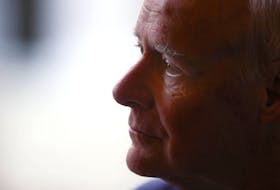The first all-Canadian zero-emissions concept car, to be launched by the country’s automotive supply sector by 2022, will be introduced Tuesday at the Consumer Electronics Show in Las Vegas.
Titled Project Arrow — a nod to the Avro Arrow supersonic jet designed and built in Canada in the 1950s — the car will be unconstrained by a price limit and will be intended to showcase the very best in Canadian engineering, materials and design, said Flavio Volpe, president of the Automotive Parts Manufacturers Association.
“A project like this unleashes the creativity of the Canadian supply base,” Volpe said. “We’re going to demonstrate the best of the best. We want to show that the Canadian supply chain is as advanced as any in the world.”
The project will begin with a design contest this summer inviting Canadian universities and colleges to submit ideas for the car. Suppliers will bid on the project in the fall and a “virtual concept” will be unveiled next year. A final, fully built vehicle will be introduced in 2022.
Though not intended for general consumers, the car will be in alignment with all Canadian road safety requirements. A typical concept car costs between $1.5 million and $2 million to build, Volpe said.
“A concept car that demonstrates to the world what the Canadian auto sector can do is money well spent,” he said.
We want to show that the Canadian supply chain is as advanced as any in the world.
Joe McCabe, president of auto industry consulting firm AutoForecast Solutions LLC, said with the future of mass auto production in Canada uncertain, the APMA project reflects a push by some in the industry to be more competitive in the “next frontier” of auto manufacturing: advanced technology, electrification and autonomous vehicles. General Motors of Canada closed its century-old Oshawa, Ont. facility in December, transforming the location into a maker of spare parts and a test track for driverless cars.
“Big automotive companies aren’t investing in Canada right now,” McCabe said. “There’s a downgrade constantly of the production landscape here. So we either bring a brand new player in that doesn’t have a footprint in North America yet or we go down the path of leveraging Canada’s strengths: a highly skilled and educated workforce, a lot of technology focus, and a centralized jurisdiction in the auto industry.”
Project Arrow is the APMA’s third industry-collaboration initiative. In 2014, the Connected Lexus Technology project saw 14 independent Canadian auto firms apply their products to a single vehicle from the Japanese automaker. A fleet of autonomous demonstration vehicles featuring Canadian technology was subsequently launched in Stratford, Ont. in 2017.
The latest project is intended to go a step further, as the first to attempt a car built from start to finish with Canadian parts, materials, engineering and design.
Though Volpe would not say which Ontario auto partsmakers would take part in Project Arrow, contributors to the previous projects included parts giants Magna International, Linamar Corp. and Martinrea International.
In the throne speech to kick off the 43rd parliament, the Liberal Party committed to achieving net zero emissions by 2050, in part by incentivizing the purchase of zero-emission vehicles. The APMA project is a response to that challenge, Volpe said.
“I think you can count on us drawing in the fuel cell capabilities in British Columbia, hydrogen capabilities from Quebec and everything in between,” he said. “We’ll be engaging the mining sector, cobalt, lithium. We will be drawing on expertise across the country.”
Copyright Postmedia Network Inc., 2020









